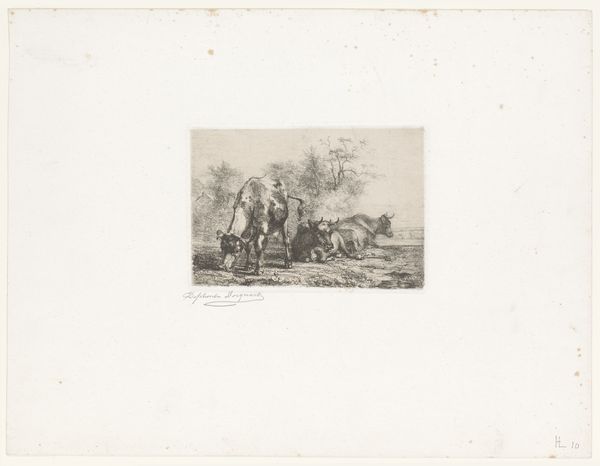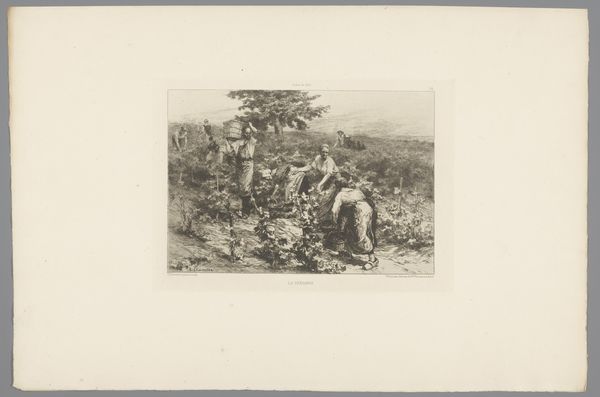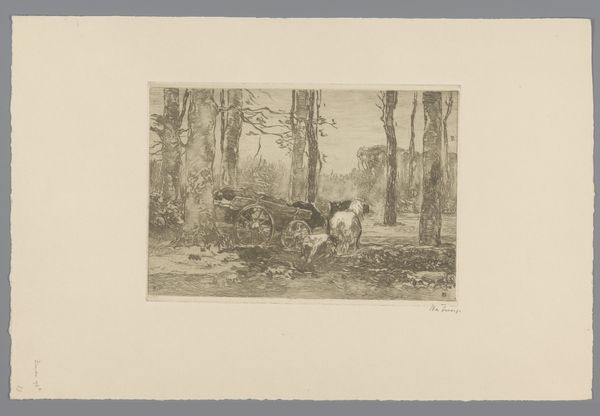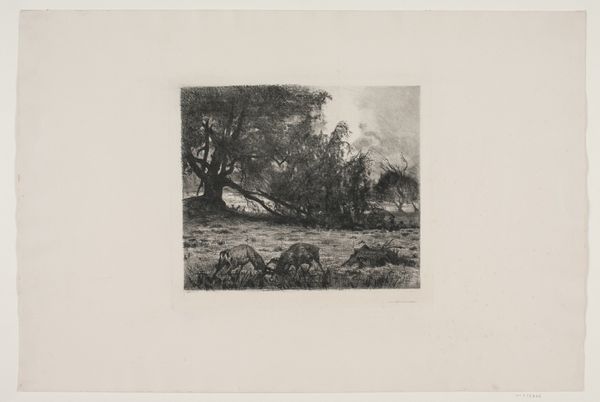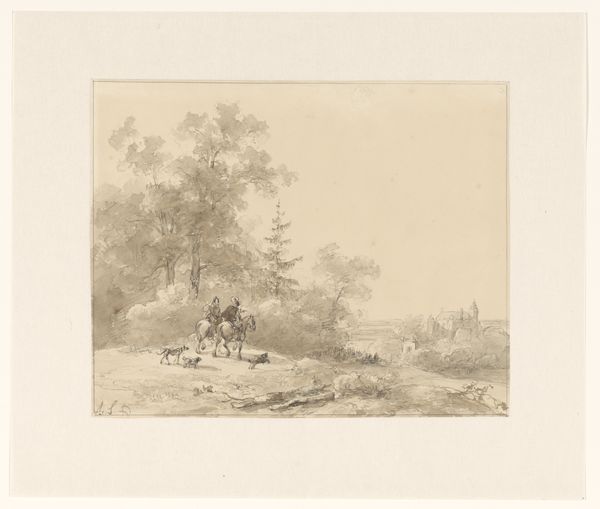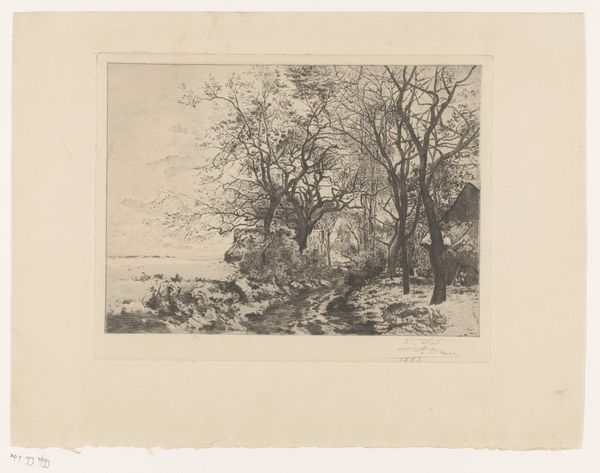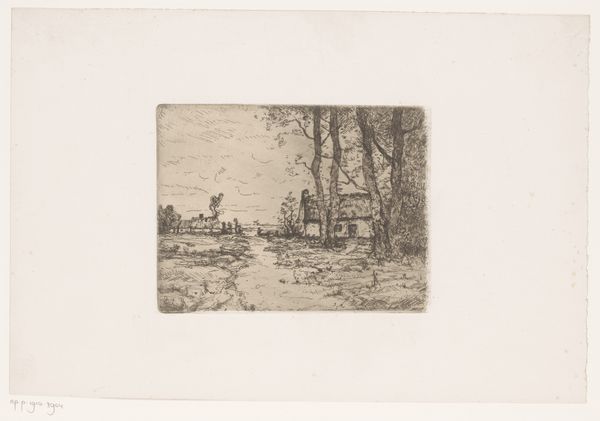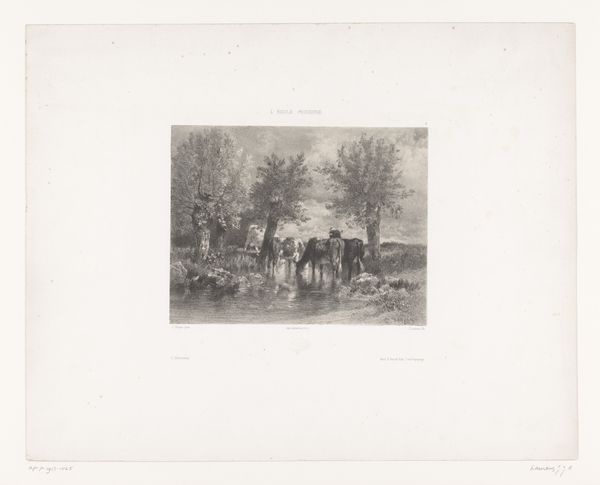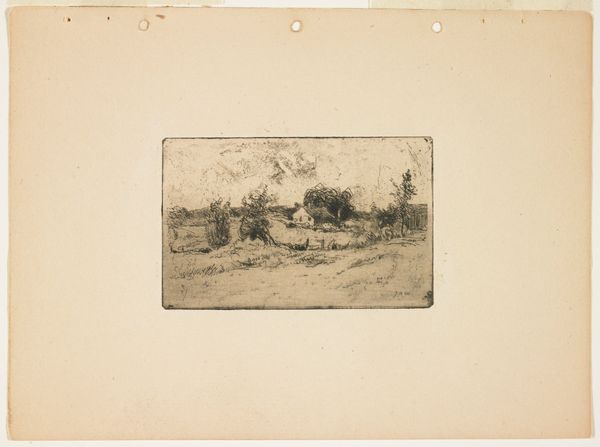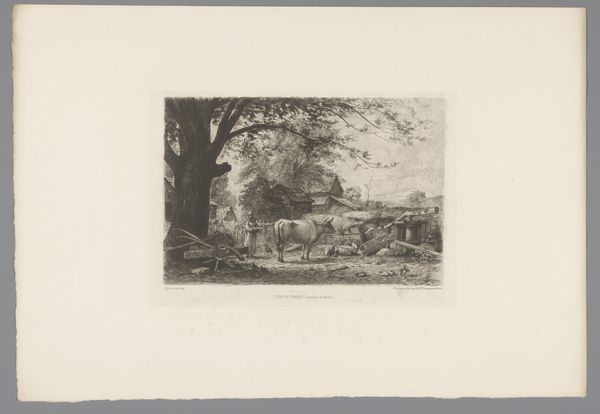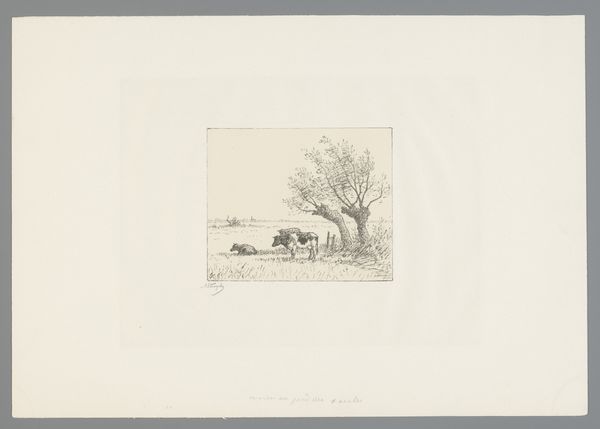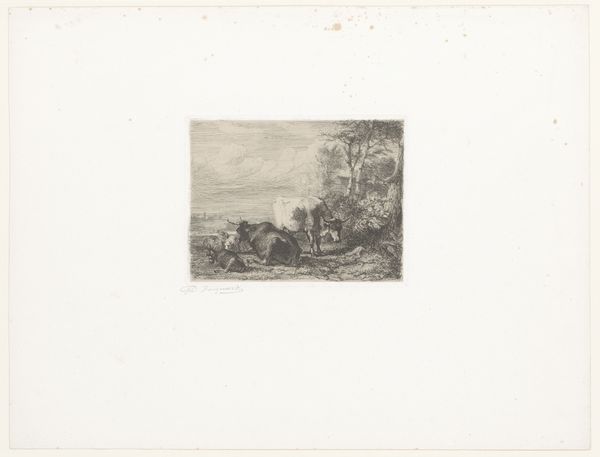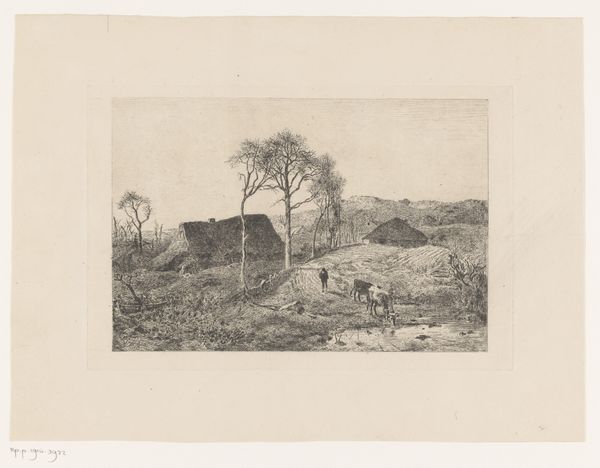
drawing, print, etching, paper, pencil
#
tree
#
drawing
# print
#
etching
#
landscape
#
river
#
figuration
#
paper
#
pencil
#
realism
#
monochrome
Dimensions: Plate: 4 3/4 × 8 9/16 in. (12 × 21.8 cm) Sheet: 11 in. × 15 1/2 in. (28 × 39.3 cm)
Copyright: Public Domain
Editor: This is Adolphe Appian’s etching, "At the Bank of the Stream in Rossillon (Ain)," from 1867. It's so detailed, especially considering it's monochrome. I'm really drawn to how the composition balances light and shadow. What stands out to you when you look at this work? Curator: The compelling aspect lies precisely in its manipulation of tone and texture achieved through etching. Observe how Appian meticulously varies the density of etched lines to suggest depth and volume, primarily in the contrast between the intricate foliage by the stream, and the smoother textures suggesting atmospheric distance. Notice the semiotic tension inherent in the bare tree contrasted against the subtle but prominent seated figure. Editor: So, it's about how he's playing with the etching technique itself? Curator: Exactly. The technique dictates the aesthetic. Consider how the materiality of the medium - the ink, the paper, the etched line - converge to produce a stark, formal, visual language, reduced to the bare minimum to be evocative. The tree, for example, only appears to have the bare minimum detail in it. Is it, or is it not alive? Appian isn't providing easy answers. He is allowing you to investigate and analyze the work on its formal and material terms. Editor: I see what you mean. It’s almost like the limitations of the materials push him to be more inventive. Thanks, that makes me look at it differently. Curator: Indeed. Engaging with the formal elements enables us to perceive not only what is depicted, but how its depicted informs its potential meanings and the viewers potential associations.
Comments
No comments
Be the first to comment and join the conversation on the ultimate creative platform.
